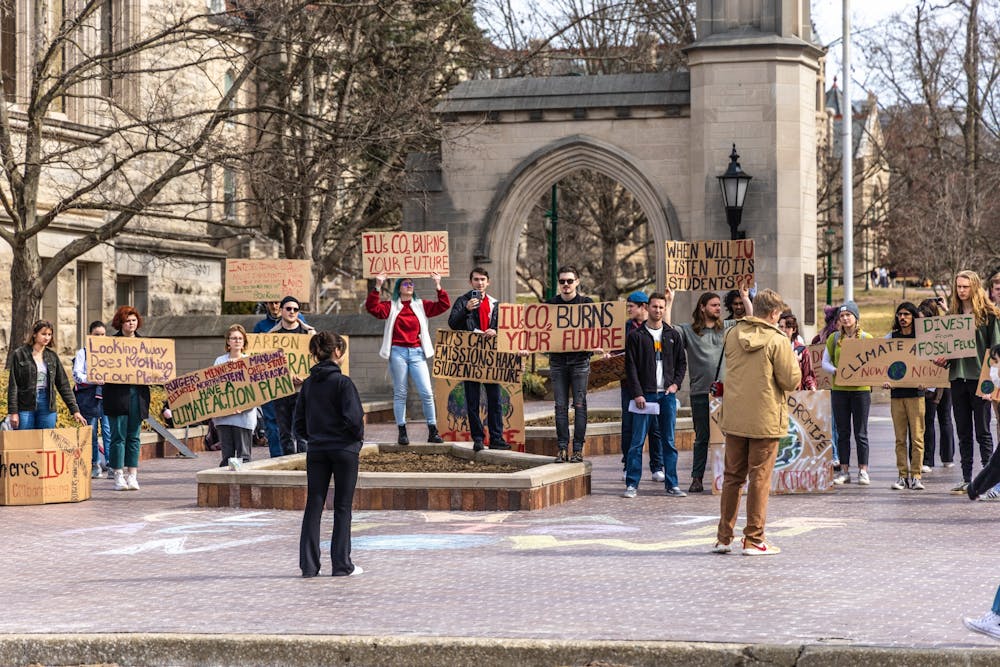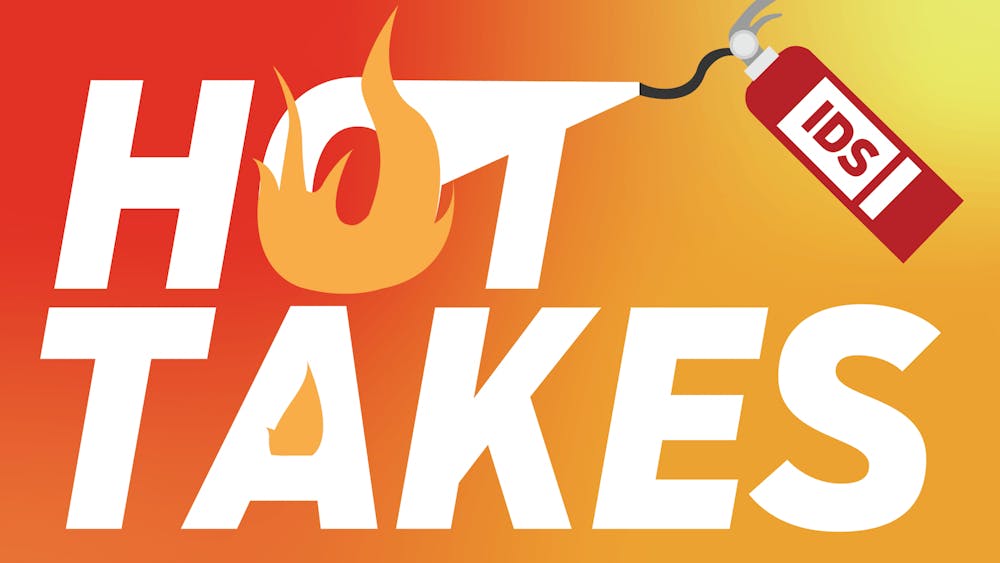IU President Pamela Whitten established the Climate Action Planning Committee in April 2022 with the primary purpose of developing long- and short-term recommendations to reduce greenhouse gas emissions on campus.
The committee laid out its 2023 Climate Action Plan at an open forum Nov. 16, but many students, staff and faculty in the audience were still skeptical and confused on what exactly the university is planning on doing to reduce its carbon footprint.
Related: [Students, activists express frustration at Climate Action Committee public forum]
To address questions about the Climate Action Plan, the Indiana Daily Student compiled information about the committee’s plans as well as why IU’s climate actions have generated protest among many on campus:
What exactly is the Climate Action Planning Committee?
The Climate Action Planning Committee is tasked with developing recommendations to reduce greenhouse gas emissions as well as to identify other areas in which the university can improve, According to News at IU. These include space planning and management, woodland campus planning, retro-commissioning of buildings and energy use and consumption.
Although mostly composed of faculty and staff members from IU-Bloomington and various other IU campuses across the state, the committee also has four student members from Bloomington, IU Northwest and Indiana University-Purdue University Indianapolis.
What is the Climate Action Committee’s ultimate goal?
As laid out at the Nov. 16 forum, the Climate Action Committee’s 2023 Climate Action Plan includes a notable commitment for carbon neutrality by 2040. According to Plan A, a Berlin-based firm that helps businesses achieve sustainability, carbon neutrality is when any carbon dioxide “released into the atmosphere from a company’s activities is balanced by an equivalent amount being removed.”
At the forum, Stet Sanborn, principal-in-charge for the project at SmithGroup, a Detroit-based architecture firm partnering with IU, said the committee plans to measure and act upon both scope one and scope two emissions. According to News at IU, scope one emissions are those emissions that IU directly makes, like from boilers or campus buses. Scope two emissions are indirect, like from purchased electricity. Scope three emissions, which are indirect and from assets not owned by IU — like emissions from student-owned vehicles — aren’t currently a part of the Climate Action Plan.
Nevertheless, it’s not yet clear exactly what the committee is planning on doing to reduce carbon emissions, and ultimately, to achieve carbon neutrality. According to the capital planning and facilities website, the committee is still in the “plan development” stage. According to News at IU, the IU Board of Trustees heard an update on the plan Dec. 1, although the minutes for this meeting have yet to be posted online as of publication time. The news release doesn’t note any information distinct from that presented at the open forum.
“The Climate Action Planning Committee is currently in the middle of its analysis, research and feedback,” Thomas Morrison, vice president for capital planning and facilities, said via email. “The committee anticipates concrete recommendations by the end of the spring semester. It’s currently operating within several guiding principles, and one of those is to analyze carbon neutrality by 2040.”
Why has there been pushback from students and faculty?
At the Nov. 16 forum, students with the climate activism group Students for a New Green World brought signs and expressed their concerns with what the group said was “ZERO commitments to climate action,” according to an Instagram post a week before the event.
Other groups, like Sunrise Bloomington and IU Student Government, have also historically pushed the university’s administration to act on the matter of climate change. This included numerous protests from the three groups prior to the establishment of the Climate Action Planning Committee in April.
Related: [Students demand climate action plan from IU at Friday protest]
While the university has satisfied activists’ initial goal in making a commitment to creating a climate action plan, students at the open forum Nov. 16 still expressed concerns regarding the committee’s lack of transparency and lack of action toward scope three emissions. Activists have also expressed frustration from the start about the fact the committee only has four student members. In short, many students simply don’t feel the university is doing enough.
“I recognize that business concerns, political and material realities often make the transformative changes we would like to see difficult to take on, and I think that reality should be considered,” Matthew Houser, a former research fellow at IU’s Environmental Resilience Institute, said. “At the same time, they’re not an excuse to do nothing around these topics.”
Related: [Student activists disappointed with IU’s new Climate Action Planning Committee]
While Houser was speaking broadly on the topic of large organization, like big businesses and universities, being hesitant to make large-scale environmental changes, his views are shared by many student activists on campus.
“Students should continue to provide feedback and suggestions via the Climate Action Planning Committee website and participate in campus forums as they are scheduled,” Morrison said. “The climate action plan values as much input as possible.”
What about the IU Foundation?
Another point of contention among activists has been the IU Foundation’s long-controversial investments in fossil fuel companies. On Nov. 5, 2014, the IU All-University Student Association passed a resolution calling for the foundation to “divest its endowment from investments in the top 200 fossil fuel companies within five years.” According to WFYI, Sunrise Bloomington was again protesting this issue in February 2022.
SNGW activists asked Morrison about the IU Foundation’s investments at the Climate Action Planning Committee’s open forum. While it had been brought up previously in the event — one attendee cited it as a primary challenge IU could face in reducing carbon emissions during an anonymous polling session — Morrison was asked directly what the committee was doing to curb these investments.
Morrison said at the forum the committee had met with the foundation over the summer to discuss their investments, and the foundation was “looking at their investments relative to renewable energy.”
“The Indiana University Foundation is a private organization and thus is governed by its own board,” he said via email. “The IU Foundation staff have been very helpful in sharing information with the Climate Action Planning Committee regarding their progress on investments in this area.”
When and how will the Climate Action Plan be enacted?
When Whitten established the Climate Action Planning Committee in April 2022, she required that committee members present a plan to her by April 30, 2023 — a little over a year after the initial report of its creation, according to IU’s capital planning and facilities website.
It’s not entirely clear what will happen after this plan is presented to Whitten or how the plan will be practically enacted. In an email, Morrison said Whitten would “have the ability to analyze the recommendations and consider next steps.”
The Climate Action Planning Committee is set to host another series of open forums during the spring semester to provide the university body with more updates on its Climate Action Plan. There is currently no tentative date for these events.






